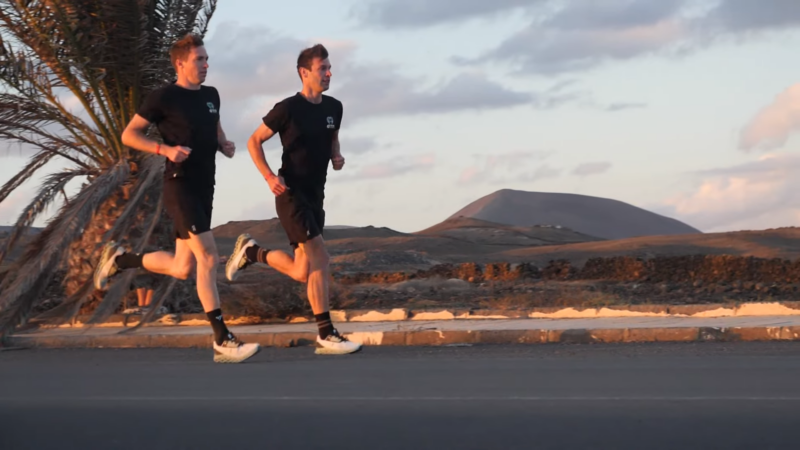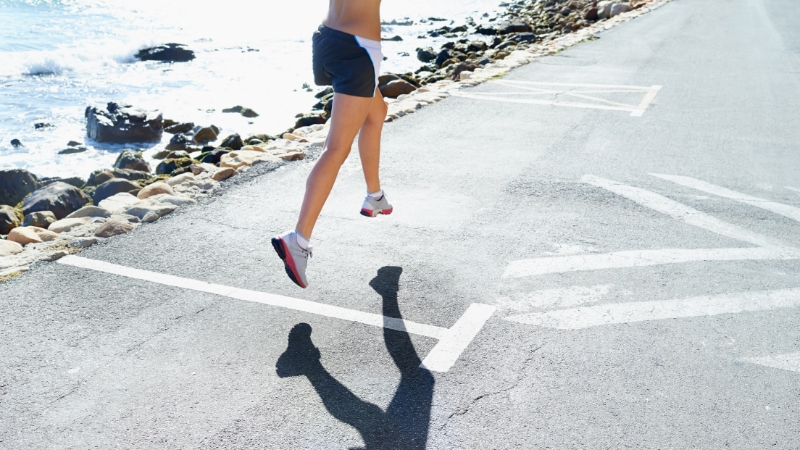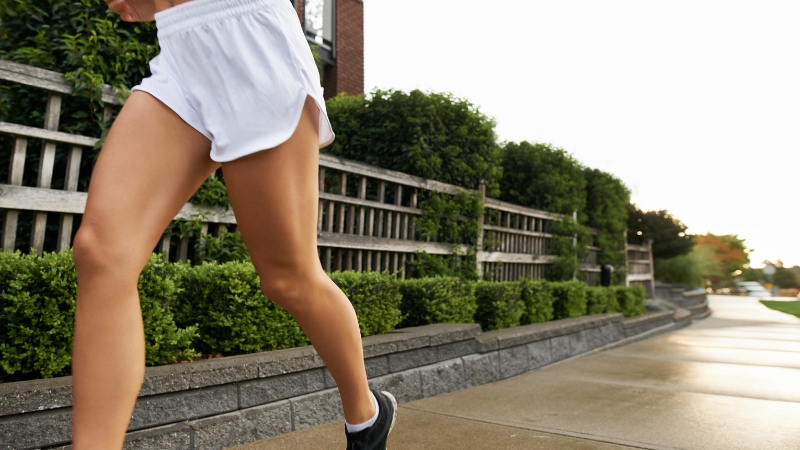I used to believe speed was something you had to suffer for. Hill sprints that left my lungs burning.
Grueling interval sessions that drained my legs. And don’t even get me started on long-tempo runs that felt never-ending. I figured getting faster was just a painful process, a price you had to pay.
Turns out, there’s a much easier way to build speed. No suffering is required. It’s quick, painless, and—best of all—it actually works.
The secret? Running strides.
They take just a few minutes, don’t leave you exhausted, and make a huge difference in how fast and efficient you feel.
After adding strides to my routine, I noticed a change almost immediately. My legs felt lighter. My turnover improved. And suddenly, I wasn’t fighting through my workouts—I was gliding through them.
So, what exactly are strides? Why do they work so well? And how do you do them the right way? Let’s break it down.
Table of Contents
ToggleWhat Are Strides?

Strides are short bursts of fast, relaxed running, typically lasting around 15-30 seconds. The key word here? Relaxed. You’re not going all-out like a sprint, and you’re not grinding through a tough workout.
Each stride follows a simple pattern:
And that’s it. No complicated pacing strategies. No intense mental focus. Just smooth, controlled speed.
Why Do Strides Work So Well?

You might be thinking, Can something this simple really make a difference?
Yes. And here’s why.
1. They Improve Your Running Form
Fast running forces you to use better mechanics. Your arms pump efficiently. Your knees lift higher. Your posture straightens. Every stride is like a mini form-check that carries over into the rest of your training.
2. They Boost Leg Turnover
Leg turnover, or cadence, is how fast your feet hit the ground. Strides help train your body to move quickly and efficiently, which makes maintaining a steady pace in workouts and races feel easier.
3. They Build Speed Without The Fatigue
Unlike brutal track workouts, strides don’t leave you sore or exhausted. They give you the benefits of speed work without the recovery time.
4. They Wake Up Your Legs
Ever started a run feeling sluggish? Strides get your legs moving and your nervous system firing, making every step feel sharper.
5. They Make Race-Day Paces Feel Easier
Because strides get your body used to running fast, goal paces start feeling more comfortable. That once-daunting tempo pace? It suddenly doesn’t seem so bad anymore.
When Should You Do Strides?

One of the best things about strides? They fit into almost any training plan. No need to carve out extra time or worry about scheduling them around tough workouts.
Here’s where they work best
- After an easy run – The simplest way to incorporate strides. Just tack on 4-6 strides at the end of an easy jog.
- Before a workout or race – Strides act as a dynamic warm-up, getting your legs ready to move fast.
- On a rest day – If you feel sluggish but don’t want a full workout, a few strides will get your legs moving without draining energy.
How To Run Strides Correctly
View this post on Instagram
A post shared by Matt Strange Running Coaching (@mattstrangerunningcoaching)
Now that you know why strides work, let’s talk about how to do them right. A few small mistakes can make them less effective—or worse, lead to injury.
Where To Do Strides
You want a surface that’s flat and smooth:
- Grass or turf – Softer on the joints, ideal for beginners.
- Track or pavement – Great if you want a more controlled environment.
- Treadmill – Not ideal, but possible with a slight incline and manual speed adjustments.
How Many Strides Should You Do?
@r4ucoaching My runner friends, are you doing your strides? #strides #runningtips #beginnerrunner #runningcoach #runningtiktok ♬ Rich Flex – Instrumental – Fruity Covers
- Beginners: 4-6 strides (20-30 seconds each)
- Experienced runners: 6-10 strides (same duration)
Common Mistakes To Avoid
- Going Too Hard – Strides are fast, but not sprints. Stay controlled.
- Skipping Recovery – Don’t rush into the next one. Let your heart rate settle.
- Tensing Up – Keep your shoulders, arms, and jaw relaxed. Running smoothly is running fast.
How Strides Transformed My Running

Before I started adding strides, my speed workouts felt like a battle. The first reps were sluggish, and my legs always took forever to warm up. When I started doing strides regularly, everything changed.
Suddenly, my workouts didn’t feel like such a shock. My legs felt sharp, and my pace didn’t fade as quickly. Even my easy runs felt better—I wasn’t dragging through them anymore.
If you’re looking for an easy way to boost speed, improve efficiency, and feel lighter on your feet, strides are a game-changer. Try them. You’ll be surprised at how much difference a few seconds of fast running can make.
Related Posts:
- Top 400 Hilarious Gym Quotes to Keep You Motivated
- 25 Simple Running Motivation Tips To Get You Moving
- How Can You Start a Career as a Running Coach?
- Half Marathon Training Plan for Beginners - Simple…
- How Long Does It Take to Train for a Half Marathon?
- How Far Is a Half Marathon? Everything You Need to Know







